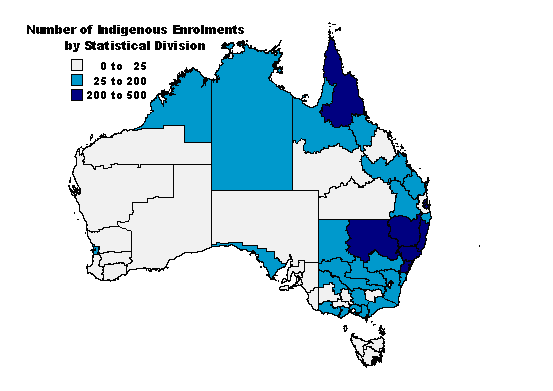Surveys
Surveys are a key tool in collecting information about a "population", whether that population is a set of people, households, businesses or even pieces of equipment. Most surveys use information from a subset or sample of the population, which if done right will lead to an understanding of the whole targeted population. Such sample surveys require proper statistical input in their design and analysis.
Surveys can be a major investment, with results often playing an important role in strategic planning decisions. Therefore, it is critical to invest in a good design, good implementation and the best analysis. Data Analysis Australia's statisticians and survey researchers have years of expertise, specialising in ensuring surveys meet the individual needs of our clients.
Data Analysis Australia consultants can advise on all aspects of survey design, implementation and reporting:
The implementation of a survey can use a mixture of collection techniques or modes, including telephone interviews, face-to-face interviews, door-to-door interviews, self completion forms and online questionnaires. Each method has its particular strengths, weaknesses and costs and for each survey Data Analysis Australia can guide the client so the right choice is made, and the best results achieved.
A well designed questionnaire is vital to ensure that the information collected is accurate, unbiased and, most importantly, gathers the information needed to address research issues. Analysis of past survey results can sometimes provide valuable information for a new questionnaire, eliminating ineffective questions and directing resources to areas of more value.
Closely linked to the collection method is the issue of sampling - how is the sample that must represent the population chosen? Good sample design can minimise costs and increase the statistical power of the analysis to provide better results.
Following on from sampling is the application of survey weighting to enable inferences to be made about the whole population. This weighting can incorporate differing sampling probabilities as well as benchmarking to known population totals.
The analysis stage may simply be a case of generating tables of results or it can involve more sophisticated analytical techniques. The planned analysis should be kept in mind whilst developing the questionnaire, to ensure that the information necessary to undertake the analysis will be obtained. If you have data that has already been collected, we can usually devise an analysis plan to extract useful information from your data, even if it isn't exactly what was anticipated when the data was originally collected.
Interpreting results from the analysis usually requires a formal assessment of the accuracy and significance of key results to ensure decisions are not made based on random variation. Data Analysis Australia provides interpretations and recommendations based on sound statistical principles and our consultants are well versed with the statistical theory and practice in determining the sampling error for a survey.
Response Rate
How many survey responses is enough?
We are all aware of magazine and television "surveys" where the public is invited to write or phone in to give their opinion on a current issue. Often the results are extreme. This is partly because only a very small proportion of the public who could participate actually do, and those who do often come from a particular viewpoint. These are examples of surveys with a very low response rate, often well under 1%. They represent an extreme example, however many other surveys also suffer from low response rates, and their results may also be misleading.
Sample Size
What size sample do I need?
At Data Analysis Australia, one of the most common queries we receive from current and prospective clients is "what size sample do I need?". A common misconception is that 400 is the magic number. However, it is not always this easy - one size does not fit all applications. In fact 400 is rarely the right answer. Not surprisingly the answer depends upon the details of the question and understanding the question is the best starting point.
Related Case Studies
Cyber Bullying

The Problem: To better understand the nature and prevalence of bullying in schools by running an Australia wide survey of students.
The Data Analysis Australia Approach: To develop a complex sampling approach and corresponding weighting methodology to ensure that the best national representation of students could be obtained and that meaningful inferences could be made about the entire Australian population and sub-populations of interest.
The Result: Estimated prevalence rates and extensive information about covert and cyber bullying in Australian schools for inclusion in the Federal Government's Australian Covert Bullying Prevalence Study report.
95% Response Rate

The Problem: How to measure progress on the participation of Indigenous children in preschool education across Australia.
The Data Analysis Australia Approach: To develop a methodology that included multi-mode response mechanisms and intensive follow up of late respondents having identified from the start that non-response and incomplete information were key issues in this area.
The Result: Data Analysis Australia has conducted the National Preschool Census (formerly the National Aboriginal and Torres Strait Islander Preschool Census and the National Indigenous Preschool Census) annually since 1993 (with the exception of 1994), achieving response rates of well over 95%.
Statistical Data Science
Analyse, visualise, and model data using the latest statistical and data science techniques
Surveys
Develop, carry out and analyse surveys to understand perception and find business insights
Forecasting and Prediction
Discover trends and predict the future with data
Spatial Analysis and Mapping
Learn how data is spatially correlated to inform strategy
Business and Risk Analysis
Understand how risk and uncertainty can be minimised in business decisions
Big Data and Machine Learning
Uncover trends and relationships to gain valuable insights from big data
Simulation and Optimisation
Determine the optimal way to operate in the future
Mining Analytics
Improve processes and uncover new insights
Interactive Dashboards
Make informed decisions from real-time data with intuitive visuals and information
